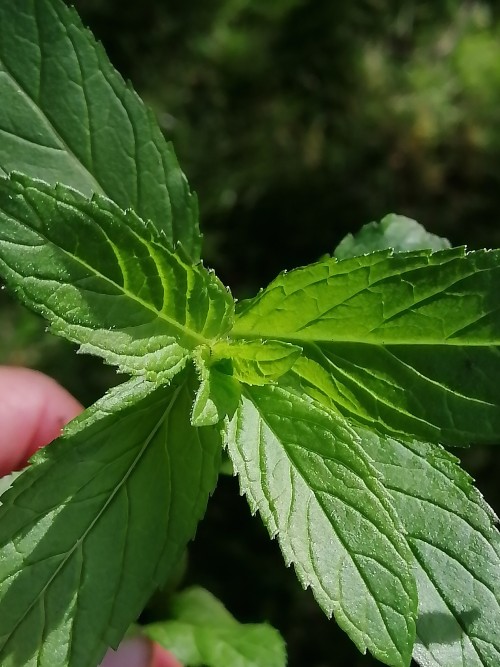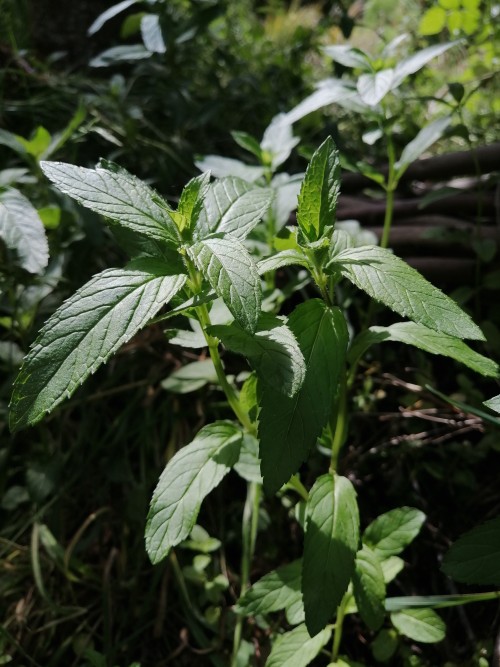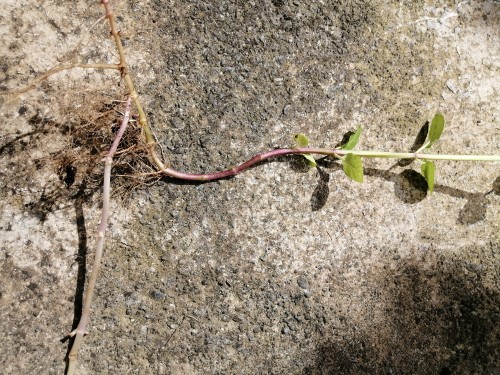Description of Peppermint (Mentha × piperita)
Peppermint (Mentha × piperita) is a perennial herb in the mint family (Lamiaceae), known for its aromatic leaves and medicinal properties. It is a natural hybrid of watermint (Mentha aquatica) and spearmint (Mentha spicata).
- Height: Typically grows 30–90 cm tall.
- Leaves: Dark green, oval to lance-shaped with serrated edges, measuring 4–9 cm long.
- Flowers: Small, purple, and tubular, blooming in late spring to early summer (November–January in the southern hemisphere).
- Growth Habit: A spreading plant with creeping rhizomes that readily form new roots.
Propagation
1. By Cuttings
- Take 10–15 cm stem cuttings in spring (September–November).
- Remove the lower leaves, leaving 3–4 at the top.
- Place the cutting in water or plant directly in moist, well-draining soil.
- Roots will form in 1–2 weeks.
2. By Division
- In late winter to early spring (July–September), dig up the root mass and divide it into sections, ensuring each has roots and shoots.
- Replant the divisions in prepared soil.
3. By Runners
- Peppermint naturally spreads via underground runners. Allow the plant to spread, then dig up and transplant young offshoots.
Cultivation
1. Climate and Soil
- Climate: Thrives in temperate to subtropical climates. Prefers full sun to partial shade.
- Soil: Grows best in rich, moist, and well-draining soil with a slightly acidic to neutral pH (6.0–7.0).
2. Planting
- Plant in early spring (August–September) in garden beds or containers to control its invasive growth habit.
- Space plants 30–45 cm apart.
3. Watering
- Peppermint requires consistent moisture but does not tolerate waterlogging. Keep the soil evenly moist.
4. Fertilizing
- Apply a balanced liquid fertilizer every 4–6 weeks during the growing season (September–March).
5. Pruning
- Regularly prune to encourage bushy growth and prevent flowering, which can reduce the essential oil content.
- Trim back to ground level in late autumn (April–May) to encourage fresh growth.
6. Pest and Disease Management
- Peppermint is relatively pest-resistant but may attract aphids, spider mites, or whiteflies. Treat infestations with neem oil or insecticidal soap.
- Ensure good air circulation to prevent fungal diseases like rust and powdery mildew.
Uses and Benefits
1. Culinary Uses
- Leaves are used fresh or dried to flavor teas, desserts, salads, and savory dishes.
- Essential in making peppermint oil, candy, and chewing gum.
2. Medicinal Benefits
- Digestive Aid: Eases bloating, nausea, and indigestion.
- Respiratory Relief: Peppermint tea or oil can soothe colds, coughs, and sinus congestion.
- Pain Relief: Peppermint oil has a cooling effect that can relieve headaches and muscle pain.
3. Aromatherapy
- The essential oil is used for stress relief, mental clarity, and relaxation.
4. Pest Repellent
- Peppermint's strong aroma deters mosquitoes, ants, and rodents. Leaves can be crushed and placed in affected areas.
5. Aesthetic Value
- Its lush green foliage makes it an attractive ground cover or border plant.


